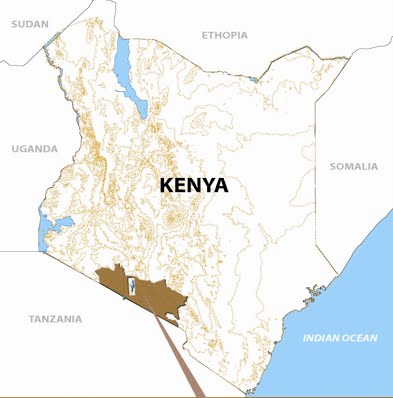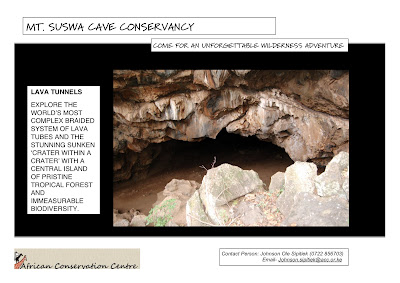Starting in 1947, Kenya’s national parks marked a first step towards conserving the country’s richest wildlife lands. Park lands were largely excised from traditional pastoral groups such as the Maasai. No compensation was awarded for the loss of their lands, causing deep resentment. Thirty years later, the first efforts to involve communities in the growing benefits from tourism were undertaken in Amboseli. In 1977, a new wildlife policy modeled on the Amboseli experiment was launched to encourage community-based conservation.
Progress in community-based conservation was halting and the results debatable, given the alien concept, lack of government backing and deep suspicions among communities. The launch of Kenya Wildlife Service’s Parks Beyond Parks Campaign in 1997 boosted community conservation initiatives, leading to Kenya’s first community wildlife sanctuary at Kimana the same year. Spurred by the emergence of ecotourism worldwide, Kenya’s fledging community and private land conservation efforts grew rapidly from the late 1990s onwards.
Community-based conservation has since come of age. Proof of local support is borne out by the many private and community wildlife sanctuaries set aside over the last decade, by the growing number of ecotourist lodges and by the deployment of hundreds of local wildlife scouts. Today, over 40 percent of Kenya’s wildlife is found on private and community lands, more than all parks, including Maasai Mara, combined.
Many weaknesses in community-based conservation remain. Most programs are linked to national parks and heavily dependent on revenue-sharing and park tourists. Enterprise skills are weak, corruption skims off substantial revenues and benefits seldom filter down to the household level. For wildlife to survive beyond fragmented park populations, conservation must win support of the wildlife-rich communities in the lands beyond parks supporting two thirds of Kenya’s wildlife. Here, communities must receive tangible benefits from conservation and play a leading role.
The new South Rift tourism destination, launched by SORALO, offers a unique chance for pastoral communities to lead in conserving one of Africa’s richest vertebrate locations to the benefit of its members. Research can give SORALO the information on wildlife and land potential it needs to plan and manage the South Rift on a profitable and sustainable footing. Yet, despite its relevance to conservation and development, research in East Africa has been done, packaged and delivered by scientists, with little community involvement. Lack of involvement has blind-sides communities on the importance of research to conservation and development and side-lined them in decision-making.
Creating community-based research is as challenging as the creation of community-based conservation, perhaps more so. It will take an equally radical shift in the focus of action and decision from the exclusion to inclusion of communities. Shifting the focus of action and decision in research calls for grass roots appreciation of science and training in skills to collect, interpret, and use information. Leveling the playing field in information access for local communities involves drawing on their own time-tested traditional knowledge and providing access to the worldwide web. Only by accessing information locally and globally will local communities be in a position to test and apply knowledge to their own challenges.
Emergence of Community based Research in the South Rift
Research in the South Rift began in 2000, when ACC set up surveys of wildlife, livestock, and human activity to monitor the success of the Shompole and Olkiramatian Wildlife Sanctuaries. The studies showed a sharp increase in wildebeest, zebra, lion and other wildlife following the creation of the sanctuaries. A new ACC project was set up to encourage and track the inward migration of elephants. The numbers have since risen from a few occasional sightings to herds seasonally exceeding 150 elephants. Community scouts were then hired, trained and deployed to protect the growing wildlife numbers, to address human-wildlife conflicts and to collect information on animal sightings. The success of Shompole and Olkiramatian soon attracted scientists interested in community-based conservation and in the coexistence of people and wildlife outside national parks.
By 2006, research interest in the South Rift, the prospects of a community income from research to compliment ecotourism, and the need for information to guide conservation and development, saw a small permanent campsite established on the south of the Uaso Nyiro Bridge. The site, and the strong link between research community interests, caught the interest of biological expeditions such as Earth Watch and zoo and university groups such as Earth Expeditions.
Activities at the resource centre have grown rapidly in 2008. New ideas for the centre are emerging out of the growing links between researchers and community. So, for example, to complement the work of the wildlife scouts, ACC has trained and deployed seven Community Resource Assessors. The CRAs were selected from local communities and have taken on work ordinarily done by researchers, including ecological monitoring, livelihood surveys and land use assessment. The assessors will collect, collate and analyze data relevant to conservation and development.
Working with resident and visiting scientists and ACC, the centre will develop new tools such as participatory GIS and 3-D landscapes for mapping information and land use planning. In yet another development emerging from the centre, an Olkiramatian member has habituated a nearby troop and conducting “Walking with Baboons” tips for visitors. Other activities such as “Walking with Cattle,” “Traditional Knowledge” walks and evening talks for visitors are planned.
The development of a community resource centre on Olkiramatian has purposely followed an evolutionary approach to exploring and developing research for conservation, ecotourism and development. The step-by-step approach draws communities into research, rather than delivers research to them from scientists. The goal of community-based research is to foster an appreciation of research, a demand for information and the skills and institutions needed to collect and evaluate data reliably. An important starting point was the collection of existing knowledge of the area, its wildlife, people, resources and time-tested production and survival strategies of pastoral societies. This helped build interest and confidence and emphasize the importance of sharing and testing knowledge.
The concept of community-based research to compliment community-based conservation won the support of SORALO at a meeting of 40 representatives held at Magadi on March mmmm. SORALO adopted the concept and gave the go-ahead for Olkiramatian and ACC to draw up an outline proposal for the resource centre, design a communal meeting hall, raise the funds for its construction and submit the final proposal to SORALO when complete. The plans will include setting up communication facilities at the centre to connect to internet and the worldwide web.


































